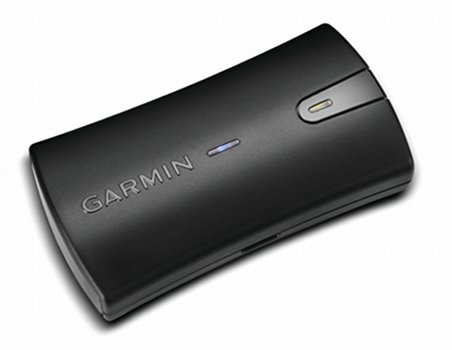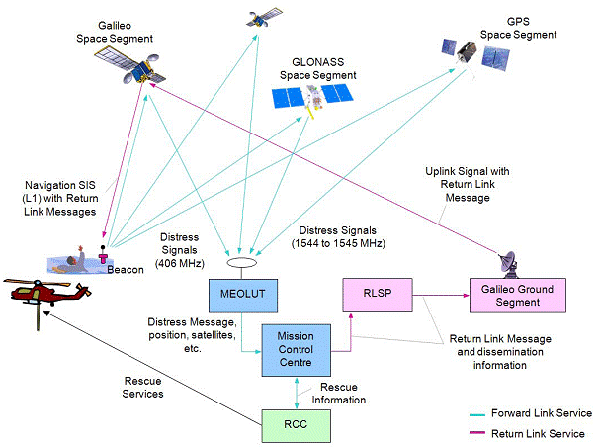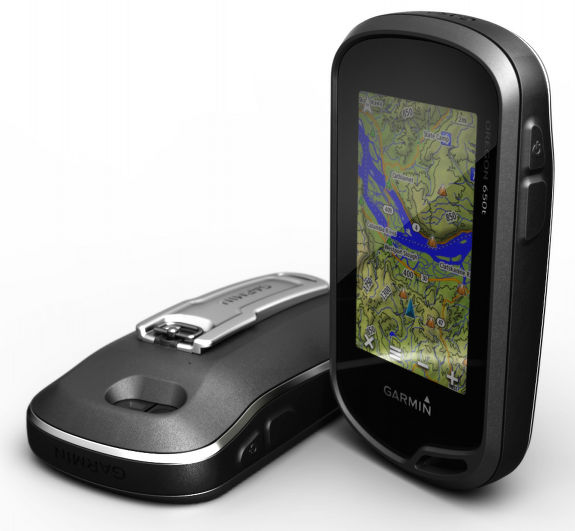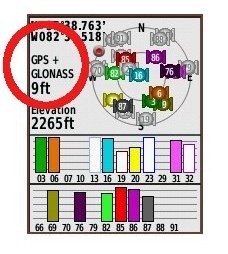In a repeat of a late 2010 disaster, three Russian GLONASS satellites were lost this morning in a fiery crash shortly after takeoff. The Proton-M rocket carrying them broke up and hit the ground within a minute of takeoff. read more
Garmin GLO review

Garmin GLO Bluetooth receiver
The Garmin GLO is a small GPS/GLONASS receiver that sends 10 position fixes per second to an external device such as a tablet, laptop or smartphone using wireless Bluetooth® technology. read more
Garmin Oregon 600 series gets GLONASS, customizable buttons, 8MP camera, battery options & multi-touch display
UPDATE: Read our hands on Garmin Oregon 650 review.
As we predicted, Garmin is updating their Oregon handheld line by adding GLONASS capabilities. But they didn’t stop there; the newest Oregons have a bevy of new features and improvements. Read on for the details. read more
Search and rescue capability coming to GPS, GLONASS and Galileo
 For many years now, satellite-aided search and rescue notification has been available using personal locator beacons (PLBs). Cospas-Sarsat, as this service is officially known, utilizes geosynchronous and low earth orbit satellites. This results in a couple of limitations — the need to have a direct line of sight to a transmitter (for the former), and the possibility that multiple orbits may be required to independently establish a position (for the latter). read more
For many years now, satellite-aided search and rescue notification has been available using personal locator beacons (PLBs). Cospas-Sarsat, as this service is officially known, utilizes geosynchronous and low earth orbit satellites. This results in a couple of limitations — the need to have a direct line of sight to a transmitter (for the former), and the possibility that multiple orbits may be required to independently establish a position (for the latter). read more
GLONASS infographic
 Since we now have a consumer handheld that can utilize the Russian GLONASS constellation, I couldn’t resist posting this. My apologies for the poor quality of the image. ITAR-TASS apparently sells these, so there are probably better images available, but the “buy” link takes you to a Russian language only page.
Since we now have a consumer handheld that can utilize the Russian GLONASS constellation, I couldn’t resist posting this. My apologies for the poor quality of the image. ITAR-TASS apparently sells these, so there are probably better images available, but the “buy” link takes you to a Russian language only page.
GLONASS in my hand
UPDATE: Here’s my hands on review of the eTrex 20, including an evaluation of it’s performance.
Well this is the coolest thing I’ve seen on a GPS receiver in a long time. I picked up the new eTrex 20 yesterday and was happy to see that, as advertised, it promptly locked on to not only GPS satellites, but Russian GLONASS birds as well.
As far as I know, this is the first consumer receiver to feature GLONASS in the US. I know there is at least one smartphone available in Russia with it, but I’m not sure what else is out there.
We’ve seen recent reports suggesting GLONASS will improve reception in northerly latitudes and urban canyons. If you’ve got an eTrex to test in those environments, we’d love to hear from you. Chime in below!
GLONASS to outperform GPS in northerly latitudes?
 Is there a GLONASS receiver in your future? You may be more motivated if you live at a northerly latitude. A Swedish firm, Swepos, which demands one-meter accuracy for their work, has integrated the Russian system into their operations, saying…
Is there a GLONASS receiver in your future? You may be more motivated if you live at a northerly latitude. A Swedish firm, Swepos, which demands one-meter accuracy for their work, has integrated the Russian system into their operations, saying…
"It functions somewhat better at northern latitudes because its satellite orbits are located higher in the sky and we see them better than we do the GPS satellites," said Bo Jonsson, deputy head of a geodesic research unit at Swepos.
Three Russian GLONASS satellites end up in Pacific
 Ouch! Three Russian GLONASS satellites carried atop a Proton rocket (pictured above) crashed into the Pacific after veering off course by eight degrees. It is believed that they went down near Hawaii. Apparently rocket separation failed to occur until a higher than planned altitude.
Ouch! Three Russian GLONASS satellites carried atop a Proton rocket (pictured above) crashed into the Pacific after veering off course by eight degrees. It is believed that they went down near Hawaii. Apparently rocket separation failed to occur until a higher than planned altitude.


